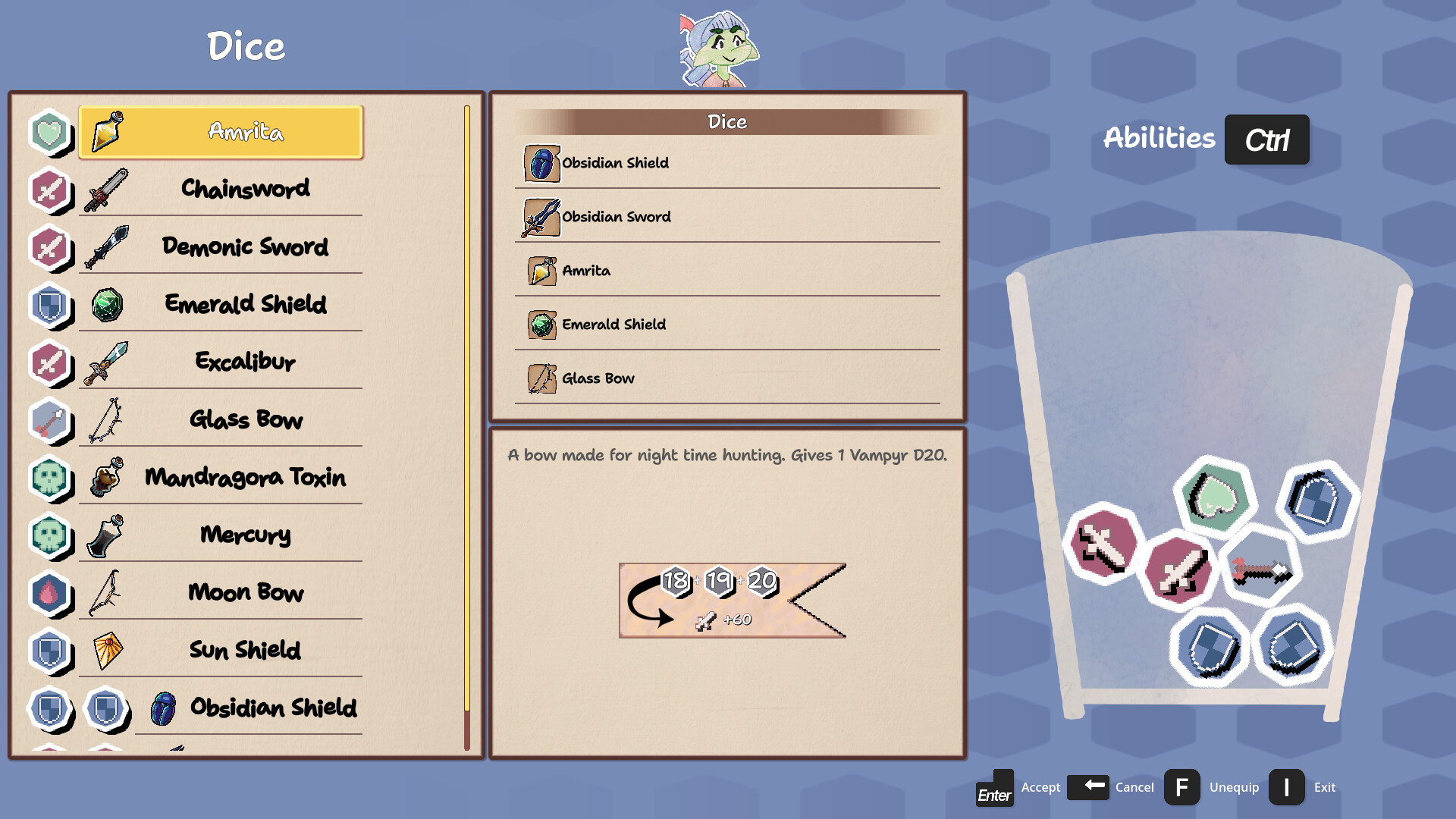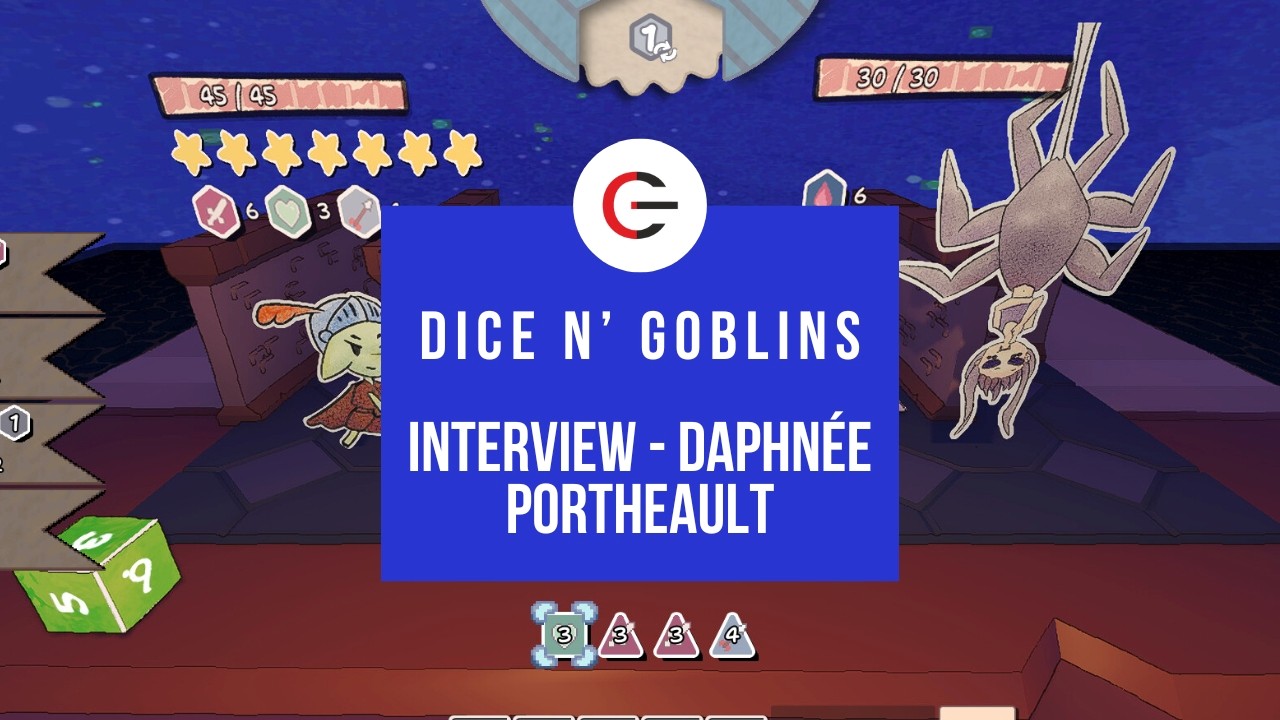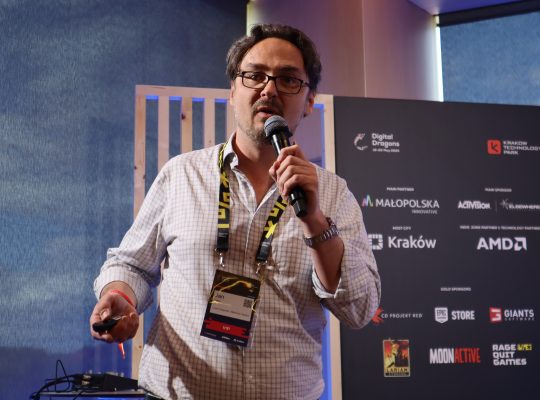Dice ‘n Goblins is a first-person turn-based and dungeon-crawling RPG that places you in the role of Gobby, a goblin knight navigating, well, a dungeon to find a safe haven for her people. With its unique dice-based combat that draws inspiration from tabletop RPGs, charming hand-drawn art, and classic grid-based exploration, the game aims to blend luck and strategy in a cozy yet challenging package.
We had the chance to chat with Daphnée Portheault, one half of the development team at Tsukumogami Software behind Dice n’ Goblins. We dove deep into the game’s inspirations, her thoughts on the gaming industry and publishers, and why she chose the cozy genre. We also discussed what to expect from her studio in the future, potential new content for Dice n’ Goblins, and what inspired its unique art style.
Dice n’ Goblins is currently available on PC via Steam, and you can also read our review of the game here.
Tell us a bit about your journey: How did Tsukumogami Software come about?
It’s currently just me and Maria who worked on the game. We both came from tech, but it became frustrating, so we decided to make a change. We took some time off to create this game, and it quickly grew into something significant. We chose the studio name Tsukumogami because we wanted a Japanese-sounding name; Tsukumogami are spirits that inhabit old objects.
How long has Dice n’ Goblins been in development?
Development started in June 2023, but progress was slow for the first six months. I wasn’t very familiar with larger projects; making small games was one thing, but this proved much harder. The game really began to take shape in January 2024, eventually releasing in April 2025. We had early demos back in October 2023, but they weren’t great. We kept iterating through more demos, constantly improving with each version.
What would you say about the game’s scope? Large or small?
I still think the scope was a bit too large for just two of us. But I play a lot of dungeon crawlers, like Wizardry and Labyrinth of Refrain, and this is the kind of game I really wanted to make, and plan to make more of in the future. I originally aimed for about a six-hour game, but the progression system in Dice n’ Goblin basically led to over-scoping, forcing me to add more levels, monsters, and abilities than planned.
We play as a goblin saving our tribe. Where did the inspiration for the game’s story come from?
I just love those little guys who have to fight. Goblins are always battling and causing trouble, so I wanted to make a game where they’re actually cute and nice. Funnily enough, the main inspiration for the game came from something not cute at all: the series Blame!. That megacity filled with monsters and a lone traveler felt very dungeon-like to me. The main antagonists in my game are actually similar to the “builders” you’d find in Blame!, if you’ve read it, especially the first few chapters, you’ll definitely see where I got that idea. Beyond that, I pulled from various other stories to weave the overall narrative.

Dice n’ Goblins is a cozy RPG. Was this something you planned from the beginning?
Yes, the game was always intended to be a bit cozy. While there are some serious moments, I didn’t want them to feel overwhelming. That’s why we aimed for this forgiving gameplay style: if you die, you simply come back. You can reallocate skill points later, and there are very few irreversible decisions.
We designed the entire game for players to enjoy for 30 minutes or an hour after work. Even the map ensures you always return to a rest point. Ultimately, I didn’t want the game to be too difficult for people to simply relax and enjoy.
Your characters are hand-drawn; how did you implement them in the game?
I drew all the art in Clip Studio Paint, a software known for manga and illustrations. My process is pretty simple, letting me draw a lot of characters quickly, which was key to getting the game out. I don’t remember the exact number, but I think there are around 50 monsters, plus various NPCs and more. I simply wouldn’t have been able to create so much with a different art style.
This aesthetic also perfectly suited the game because it was easy to achieve within our limited scope and resources. Since we did all the art ourselves, and we’re not really into dark, Bloodborne-style visuals, this art style was definitely more in our comfort zone.

What about the game’s perspective, a first-person view with grid-based movement? Where did that inspiration come from?
That comes from a whole genre of grid-based games that let you really focus on movement and exploration. It removes a lot of constraints, allowing players to settle into a rhythm. I just genuinely love that style. Basically, before full 3D, RPGs were often grid-based. After games like DOOM, that approach largely faded in the West, though it continued strongly in Japan right up to today. But yes, I simply adore this type of game, and it’s exactly what I wanted to create.
Dice n’ Goblins has a simple dice system, how did you come up with it?
The decision to use dice was multi-faceted. First, I absolutely love board games, and I think that influence really shows in the design. I play a lot of dice-builder games where you collect dice that impact gameplay, much like deck-builders, or games where you need to create specific combinations. A game like One Deck Dungeon, which is dice-based, is quite similar to what I was aiming for.
My second thought was that dice games would be really popular right now, especially given their similarity to Slay the Spire’s gameplay. Plus, everyone understands dice. Just like everyone has played card games, every gamer knows how dice work. I figured a big dice game might emerge, and I wanted to be part of that wave.

Tell us about the combo system involving different equipment and dice
For the combo system, as I mentioned earlier, our initial demos weren’t working well. The game either offered no control, nothing to do, or was too random. The idea came from another RPG, Atelier Ryza, which is very different. In Atelier Ryza, when you perform certain attacks, you get a bonus, and I thought: “Oh, maybe that’s it! That’s what I need to do.”
We tried it, and at first, we didn’t have control over the dice at all. It was actually much more fun then because you’d roll a die, it would trigger something, which would then trigger something else, creating these really enjoyable chain reactions. Eventually, we added the ability for players to control the dice, and that’s how we ended up with the current system.
What about the star system that lets you control your destiny?
That concept was actually there from the very beginning. Board games like King of Tokyo and Yahtzee, with their similar dice-rolling gameplay, gave me the initial idea. I had a long list of ideas and kept tinkering until something clicked. One of my biggest challenges, though, was the energy system. Originally, you’d pay dice to activate skills, and those dice would then be removed.
It was interesting because you could gain and remove dice, and I still think there’s a good idea there. However, my implementation wasn’t very fun; it constantly triggered effects. A major point of frustration was figuring out how to gain and regain energy.
At one point, we released a Steam demo where stars wouldn’t regenerate unless you had zero energy. People really disliked that, and this system was in the demo for a long time. Then, very late in development, maybe just six months before release, we made a crucial change: if you do nothing, you regenerate energy. After that, we received no more negative feedback about it. People were okay with it, and this change made them feel much more in control of their destiny, as they could wait to build energy and spend it as they wished.
What’s your opinion on the gaming industry right now, especially the indie scene?
The indie scene is very complicated right now. I don’t want to say too many negative things because I don’t want to discourage people who are trying their best. I think right now there’s a bit too much… how should I put it? As indie game developers, we’re very obsessed with wishlists and sales, and not necessarily about making good games. Which is normal, we all want to make money.
But I feel like the indie dev discourse, not necessarily the games themselves, but what people are talking about, is too focused on how to trick people to get wishlists and trying to make very fast games, like in six months to a year. The idea is to make a bit of money and then move on to the next project, which is perfectly fine. But I think being obsessed with it isn’t fine. I’m not saying people doing their best are bad, but if everyone is doing this, I don’t think it’s good for the mental health of indie developers either.
What’s your opinion on publishers? Have you ever been contacted by one?
We actually started out with a publisher, but it didn’t work out, we just had different target audiences. In the end, we decided to go with it alone, and thankfully, our lawyer helped us secure a very good contract, which was a huge benefit.
I don’t have a strong opinion on publishers since I never finalized a contract with one. However, the creator of Nuclear Throne, Rami Ismail, has a great talk on this topic. Publishers nowadays are really reluctant to take risks. They prefer to fund games that can be completed in under a year for less than €200,000. That’s a tiny budget if you’re trying to support a team for a year or more.
It’s tough right now to work with publishers who might try to take advantage of you, but I suppose that’s part of their job. What’s frankly gross is when publishers contact you just a couple of weeks before release, trying to “snipe” your game.











